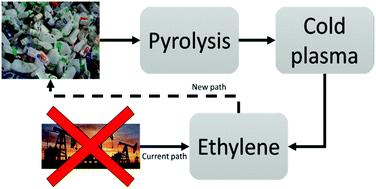Monomer recovery through advanced pyrolysis of waste high density polyethylene (HDPE)
Abstract
Plastic use has increased by twenty fold since the 1950s and so has the amount of plastic waste generated. Although legislation promotes reuse and recycling, still over 50% of Europe's plastic waste is still disposed of into landfills. Therefore, millions of tonnes of plastic end up in the environment, provoking severe harm, wasting tonnes of resources (i.e. fossil fuels), and generating the need for advanced treatments, i.e. pyrolysis. Commonly, only a small amount of monomer (i.e. ethylene (C2H4)) and a large amount of waxy products, i.e. aliphatic hydrocarbons that require further refinement, are recovered by conventional pyrolysis of high density polyethylene (HDPE). Therefore, direct conversion of HDPE waste into high value added products would be more desirable. In this study, experiments were carried out using cold plasma assisted pyrolysis of waste HDPE for valorisation. With the assistance of cold plasma, up to 22–25 wt% ethylene was recovered from HDPE waste, up to 55 times higher than that obtained in conventional pyrolysis of waste HDPE. Catalytic cold plasma pyrolysis showed that the addition of only 3–10 wt% HZMS-5 or sulphated zirconia doubled the gas (up to 41 wt%) and subsequently the ethylene yield at low temperatures. This study opens up opportunities to valorise unsorted waste into intermediates for chemical processes via a simple process.



 Please wait while we load your content...
Please wait while we load your content...